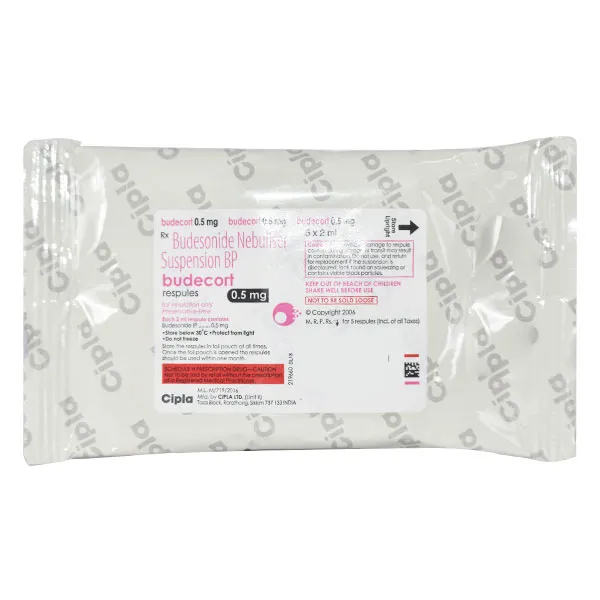✅ Budesonide 1 mg Respules: Uses, Dosage, Side Effects & How to Use for Asthma and COPD
What is Budesonide Respules?
Budesonide Respules contain budesonide, a corticosteroid medication primarily used to reduce inflammation in the airways. They are typically administered via a nebulizer and are commonly used in the treatment of asthma and chronic obstructive pulmonary disease (COPD). Budesonide helps alleviate symptoms such as wheezing and shortness of breath by decreasing swelling and irritation in the lungs.
📦 Composition
Each 2 mL respule contains:
Other ingredients (may vary by manufacturer):
- Disodium edetate
- Sodium chloride
- Polysorbate 80
- Water for injection
✅ Uses (Indications)
Budesonide 1 mg Respules are prescribed for:
- Prevents and controls chronic inflammation in the airways
- Reduces frequency and severity of asthma attacks
- Especially useful for patients who are unresponsive to low-dose inhalers
- Reduces inflammation and mucus production in moderate to severe COPD cases
- Commonly prescribed in pediatric respiratory conditions
Note: Budesonide is not a rescue medication and should not be used for sudden asthma attacks.
⚙️ Mechanism of Action
Budesonide is a glucocorticoid that:
- Binds to glucocorticoid receptors in the lungs
- Inhibits the release of inflammatory mediators (like histamines and cytokines)
- Decreases airway hyperresponsiveness and swelling
- Improves breathing over time with consistent use
🕒 Dosage & Administration
Typical Dosage (Adults and Children):
- Children (6 months – 12 years): 0.25 mg to 0.5 mg once or twice daily
- Adults & Adolescents (12+ years): 1 mg once or twice daily
Always follow your doctor’s prescribed dosage.
How to Use Budesonide Respules:
- Shake the respule gently.
- Twist and open the top of the single-use ampoule.
- Pour contents into the nebulizer chamber.
- Inhale using a face mask or mouthpiece connected to a compressor nebulizer.
- Continue until all medicine is inhaled (about 5–10 minutes).
- Rinse the mouth and wash the face after use (especially for children) to avoid oral thrush.
⚠️ Side Effects
Common Side Effects:
- Hoarseness of voice
- Oral thrush (fungal infection in the mouth)
- Cough or throat irritation
- Headache
Less Common/Serious Effects:
- Allergic reactions (rash, swelling, difficulty breathing)
- Behavioral changes (especially in children)
- Growth retardation with long-term use
- Eye issues (glaucoma, cataracts – with prolonged use)
🛑 Warnings & Precautions
- Not for acute asthma attacks – use a fast-acting bronchodilator instead
- Rinse the mouth after each use to prevent fungal infections
- Regularly monitor growth in children
- Long-term use should be supervised by a healthcare provider
- Use with caution in patients with:
- Liver disease
- Active or latent tuberculosis
- Viral or fungal respiratory infections
🔄 Drug Interactions
- CYP3A4 inhibitors (e.g., ketoconazole, ritonavir) may increase budesonide levels in the blood
- Should not be mixed with other nebulized drugs unless directed by a doctor
📦 Storage Instructions
- Store below 25°C (77°F)
- Do not freeze
- Use immediately after opening
- Discard unused portions
- Keep out of reach of children
💡 Patient Tips & Counseling
- Use daily, even when you feel better, for best results
- Keep nebulizer equipment clean
- Track symptoms to monitor improvement
- Discuss any changes in breathing or side effects with your doctor
- Do not suddenly stop the medication without medical advice









Reviews
There are no reviews yet.